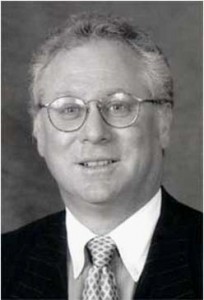 In Focus: Washington, DC
In Focus: Washington, DC
By Chelsey Leffet and Jerod S. ByrdAs economic recovery resumes and tourism strengthens, Washington, D.C. remains a top draw for leisure, convention, and government demand, with area hotels achieving some of the highest RevPAR levels in the nation.
In one of the highlight sessions at the Tourism, Hotel Investment & Networking Conference (THINC) Indonesia 2014, Robert (Bob) Sonnenblick, Chairman – Sonnenblick Development, will lead a panel discussion comprising some of the most prominent players in the region’s Luxury Hotel and Resort segment. The session, titled ‘Luxe in Flux: The Next Big Trends in Luxury Hotels and Resorts’, will see this select panel of industry experts share their perspectives and knowledge of the market, discuss latest trends, and what lies ahead for this segment in the years to come.
REGISTER NOW AT THINC INDONESIA 2014.
 Justin Yang
Justin Yang
Los Angeles Business Journal
March 3rd, 2014
The Beverly Hills hotel market, which boasts some of the highest room rates in the region but has not seen a new property built in nearly six years, is starting to heat up.
In what one city official conceded was an unusual overture, Pacific Palisades developer Sonnenblick Development has submitted an unsolicited proposal to build a 124-room luxury Auberge Resorts hotel on a 1.4 acre city-owned property at 9268 Third St.
The hotel, right in the backyard of another luxury hotel, L’Ermitage Beverly Hills, would be built on land leased from the city. The parcel now houses a small office building that has been the home of Lakeshore Entertainment since 2005.
In response to the proposal, the City Council directed staff to hold an informal public meeting last month to gauge public interest and advise the council on next steps.
While unsolicited proposals are not common, David Lightner, deputy city manager, said Beverly Hills had received expressions of interest recently for other city-owned properties, including a 5-acre site nearby on Foothill Road between Third and Alder streets.
“These proposals are not frequent,” Lightner said. “During the recession years, it was fairly unlikely. As the city emerged from recession starting from 2012, developers started looking at the (Lakeshore) site.”
Robert Sonnenblick, principal of the development firm, said in an email to the Business Journal that he was interested in the Lakeshore site because its quiet neighborhood can attract a high-end clientele, pointing to L’Ermitage’s success. He approached the city because it could give him a better deal than other privately owned sites in Beverly Hills. Land is scarce and difficult to find in the city.
“First, we really like the hotel market in Beverly Hills. It’s really strong and it has a great history,” he wrote. “Second, all of the other sites are being bid up to crazy prices by condo developers.”
That has residents wondering if the city is getting a good deal if it were to move forward with the hotel.
Marilyn Gallup, vice president of community group Beverly Hills Municipal League, said the city needs to determine a true value for the site before showing interest in projects like this.
“Looking at the renderings, it looked very nice. I’m not for it or against it,” Gallup said of the proposal. “First you have to put value on the land to know whether or not the city would be getting a good return. The city needs to decide what they want to do with the properties before you start looking at individual projects.”
That, said Lightner, is exactly what the city is doing.
“Is this the highest and best economic generator for the city? Are there other municipal functions? Are there other functions anticipated?” he asked. “That’s why the City Council said, ‘Let’s go talk to people and figure it out.’”
Healthy market
A recent report by PKF Consulting USA estimated that Beverly Hills had an average room rate of $414 and market occupancy rate of 77.3 percent last year.
Sonnenblick said a hotel on the site could generate as much as $2.5 million a year in transient occupancy taxes in addition to its payments on the ground lease.
Lightner said revenue generated by a hotel could be significant, but the city was still researching potential returns.
The last hotel to be built in Beverly Hills was the Montage, at 225 N. Canon Drive, which bowed in late 2008, and the prospect of another hotel in the city, whether an Auberge or another operator, remains preliminary. The Lakeshore site, just north of Burton Way and about four blocks west of the Four Seasons Hotel on Doheny Drive, would need to be rezoned to accommodate a hotel. Lightner said the property is zoned for parking, institutions and parks; rezoning the property would be a lengthy process requiring further studies and examinations of the site.
Lakeshore has a lease that runs for another year with an option for a five-year renewal. Lightner said the city could end that lease if the site were to be redeveloped.
Sonnenblick is not the only one to express interest in redeveloping the site as a hotel. Lightner said the owners of L’Ermitage, which fronts on Burton and backs on the Lakeshore site, has also expressed interest. A spokeswoman for L’Ermitage declined to comment.
Alan X. Reay of Irvine hospitality consultancy Atlas Hospitality Group said there is more than enough room for Beverly Hills to take on another hotel. He said the West L.A.-Beverly Hills hotel market is one of the nation’s best, second only to Manhattan.
“The L’Ermitage is 39 years old and it’s a nice building,” Reay said. “But with this proposal, you have this new product with a Beverly Hills address. There’s so much demand right now, the city could easily absorb a 124-room hotel. Ninety percent of the cities we deal with love the (transient occupancy taxes). It drives jobs and hotels.”


May 15, 2014 by Ian Ritter
Robert Sonnenblick, Chairman of Sonnenblick Development, has completed over $1.5B of commercial real estate transactions on the west coast. Among the most notable include: Beaudry Center, LA ($197M), The Ritz-Carlton Hotel, Pasadena ($97M), One Waterfront Plaza, Honolulu, HI ($100M) and the LA World Trade Center ($55M). He was also an original development partner of the $90M Loews Santa Monica Beach Hotel, which sold for $125M.
One commercial real estate sector that GRS Group hasn’t touched on recently in this space is hospitality. Bob Sonnenblick, chairman of Sonnenblick Development LLC, recently filled us in on the current hotel trends, and he had plenty of good news to share. Development is back, core markets are hot and fundamentals are in good shape. Sonnenblick shared what he thinks are the hotel sector’s bright spots.
We hear a lot about multifamily and its boom. What is going on with the hospitality sector right now?
There’s no question that the apartment industry is the darling of the real estate business right now. Every investor, pension fund or builder is actively looking for apartments. But as a result, there has been huge competition in the apartment sector, and it’s taken away most of the profitability of being in that sector. It’s become a very hard and competitive business now.
The exact opposite is the case in the hotel business, where there are very few hotel developers still standing as a result of the previous recession from 2008 to 2012, when most of them all got wiped out. It’s actually a very good time to be a hotel developer right now.
Most importantly, hotel operations are at an all time high this year. Tourism in Los Angeles County just broke a record for the largest dollar volume of tourism ever. The actual business side of our industry is very strong.
What kind of development is happening?
The limited-service hotels, the ones without food and beverage components, like Hilton Garden Inn, Hyatt Place and Courtyard by Marriott, the real select-services are on fire. Those are the ones that are getting built around the country right now. There is very little construction of full-service, high-rise, four-star and five-star hotels.
What is driving this?
It is a very simple concept. The profit margins on the rooms component of a hotel are very high. The profit margins on the food and beverage components are very low. So people are building hotels now with only rooms in them and nothing else. The customer is OK with that. They’ll take a nice room and walk across the street to a restaurant.
There’s clearly an increase in spending that’s happened over the last year. Operations and profitability are up about seven percent this year alone, which is a huge jump. But these select-service hotels are generally equivalent rooms to the full-service hotels, but they’re priced 30 percent lower. The customer loves it.
How is business travel holding up?
Business travel is back up to the levels we had seven years ago. That part is all really good, and next year it will be even higher. In general, the outlook for the hotel industry is a very strong future over the next two or three years with very limited new supply.
Are there any parts of the country doing particularly well?
There are two parts of the country that are very strong, and not surprisingly, it’s the two coasts. The New York-Washington D.C.-Boston market is unbelievably strong. The L.A.-San Francisco combo-market is very strong. The third market that is equally strong is Miami and South Florida. The coastal markets are having phenomenal years. The middle of the country is fairly flat.
Are there any hotel projects you have on tap that you’d like to highlight?
We’ve got two projects in California that we are very excited about. The first one is the building of a $75-million hotel on the campus of the University of Southern California Medical Center, surrounded by four hospitals and three medical schools. it’s a very exciting project for us. And we’re doing a 137-room hotel inside the new terminal at Sacramento International Airport. Any time you build a hotel attached to the airport terminal, it gives you a big leg up on getting really good occupancy.
We are also actively looking for more sites around Southern California that are located near and attached to major hospital projects.
Do you see anything derailing this momentum?
Unless it’s some kind of wild international act of terrorism, other than that, I really see us having a pretty good two-to-three-year run in front of us before you see interest rates start going back up.
– See more at: http://www.grs-global.com






